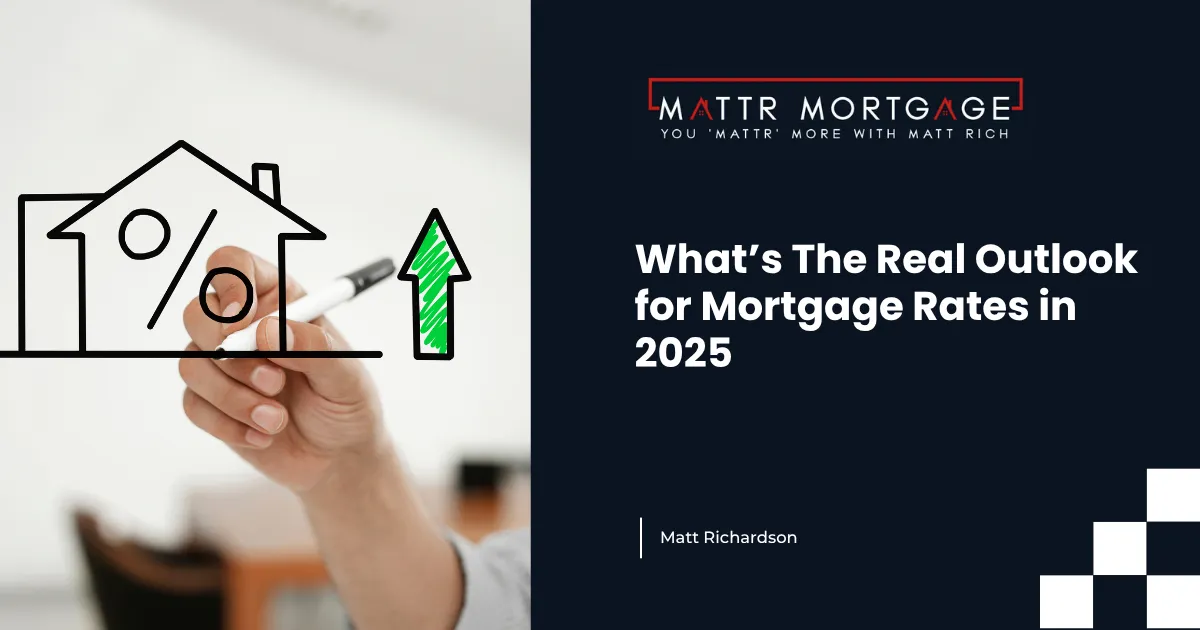
What’s The Real Outlook for Mortgage Rates in 2025
If you’re thinking about buying a home or refinancing this year, the first question on your mind is probably: Where are mortgage rates headed in 2025? After two years of steep increases and economic uncertainty, many buyers and homeowners are hoping for relief. So—what does the data actually say?
Let’s take a closer look at the trends, expert forecasts, and what it really means for you.
1. Where Mortgage Rates Stand Today
As of mid-2025, the average 30-year fixed mortgage rate is hovering between 6.5% and 7%, according to Freddie Mac’s Primary Mortgage Market Survey. That’s lower than the peak we saw in late 2023 (which crested above 8%), but still well above the 3%–4% rates seen during the pandemic years.
So, while we’ve come down from the highest points, this is still a higher-rate environment—historically speaking, though, it’s not as extreme as it might feel. In fact, the 50-year average for 30-year fixed mortgage rates is about 7.7% (Investopedia).
2. What the Experts Predict for the Rest of 2025
Most housing economists agree that mortgage rates are likely to gradually decline as inflation continues to cool and the Federal Reserve considers rate cuts later in the year. Key forecasts include:
Mortgage Bankers Association (MBA): Predicts 30-year fixed rates to end the year closer to 6.1%
Fannie Mae: Expects rates to decline into the low 6% range by Q4
National Association of Realtors (NAR): Forecasts rates around 6.3%–6.5% by the end of 2025
But remember, these are projections—not guarantees. Rates can be influenced by global events, inflation trends, job reports, and even political uncertainty.
3. What’s Driving Rate Fluctuations in 2025
Several key factors are influencing the mortgage rate outlook this year:
Inflation: Slowing inflation has helped bring long-term bond yields down, which in turn has lowered mortgage rates. The Consumer Price Index is still closely watched for any signs of stickiness in inflation.
Federal Reserve Policy: The Fed doesn’t set mortgage rates directly, but its decisions on the federal funds rate shape market expectations. While the Fed has held rates steady for much of 2024, a rate cut in the second half of 2025 is now considered likely by many analysts.
Economic Growth: Slower growth or a mild recession could push rates down faster. Conversely, if the economy surprises to the upside, rates could stay higher for longer.
4. Should You Wait or Act Now?
This is the question everyone’s asking. If you’re thinking of buying or refinancing, timing the market perfectly is almost impossible. What matters more is:
Your personal finances
Your timeline
The opportunity cost of waiting
For example, if you’re renting and watching home prices climb, locking in a rate now—even if it’s higher than you’d like—could save you more in the long run by building equity sooner. Plus, if rates fall, you can always refinance later.
On the other hand, if you already own and have a very low rate, refinancing may not make sense right now—unless you’re using a cash-out refinance for debt consolidation or renovation.
5. What to Watch for in the Months Ahead
If you’re planning to act this year, stay tuned to:
Freddie Mac’s weekly rate updates
Federal Reserve meeting calendars and press releases
Housing supply data from the National Association of Home Builders and Redfin
These indicators can give you a feel for where the market’s heading and how lenders might respond.
The Bottom Line
Mortgage rates in 2025 are finally showing signs of stability and even some decline. But they’re not expected to return to the historic lows of 2020 or 2021. Instead, we’re likely headed toward a “new normal” in the low-to-mid 6% range.
If the numbers make sense for you now—and you’ve got a plan—it may be smarter to act sooner rather than later. Just make sure you’re working with someone who can explain your options, help you compare scenarios, and adjust strategy if the market shifts.



